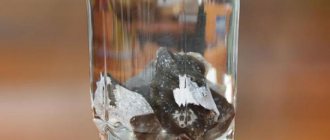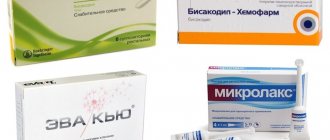General information
Albinism (from the Latin albus - white) is a hereditary disease and belongs to the group of aromatic acid metabolism disorders (ICD-10: E70), which is characterized by a congenital partial or complete absence of the pigment melanin , while the skin remains of a completely normal appearance and shape integument, hair and iris of the eyes, but they are discolored, pale or simply of a lighter shade. Albinos rarely differ in health from the rest of the population, except for vision problems and an increased risk of burns or skin cancer .
This anomaly occurs in approximately 1 out of 10-20 thousand individuals on the planet, regardless of ethnicity and gender; in the area of the “founder effect” mutation in Africa, this figure is much higher - for every 150 people there is an albino (source: Wikipedia).
Melanins determine the color, color, color of feathers, fish scales, insect cuticles, etc. among all creatures on Earth, the term comes from the ancient Greek and the root "melas" and means black. The more protein-bound pigment (melanoproteins) synthesized by melanocytes, accumulated in melanosomes and deposited in keratinocytes, the richer and darker the color of the integument. In humans, these processes occur under the influence of the melanostimulating hormone of the pituitary gland and UV radiation.
Melanocytes and melanin in human skin
In addition to the color variety, pigments perform a protective function - they prevent radiation damage by absorbing ultraviolet rays. They take part in the neutralization of free radicals, acceleration of chemical and biological reactions, protection against stress and in adaptogenic processes. Melanins are a whole group of various high molecular weight pigments, which include:
- eumelanin is the most common type of black-brown pigment;
- pheomelanin - a polymer that provides a reddish color or a characteristic pink coloring of the lips, nipples, genitals, in addition, it makes the hair red;
- neuromelanin , which is found in significant quantities in the structures of the inner ear and brain, its functional significance is still not clear.
In plants, this variant of pathology is expressed in the form of a lack of chlorophyll in the body.
Albinos people - character: features
Albinos - character
In essence, albinos are no different in character from others. Generally, young people do not like daytime because they are too sensitive to light. Therefore, many people note that they go to bed late at night, because they feel much more comfortable this way. Children often bully peers who are different from them, but this does not prevent them from achieving great success. For the most part, these are kind, cheerful people.
By the way, today the topic of albinism is gaining more and more popularity on the Internet, and some people even deliberately pretend to be such because they like to stand out and be different from everyone else.
Pathogenesis
Congenital absence or deficiency of pigment in the body can develop under such conditions as a lack of enzymes necessary for the synthesis of melanin molecules, for example, melanin migration throughout the body requires macrophages-melanophores, which are not capable of its synthesis in the absence or defectiveness of tyrosinase. In some albinos, tyrosinase levels are normal, so it is assumed that there are other enzymes important for melanin metabolism. In the case of Chediak-Higashi syndrome, albinism develops as a result of impaired transport of melanin granules into melanocytes.
Scheme of the process of darkening skin and hair
A decrease in the polymerization of the melanin molecule occurs under the influence of oxidative stress, light rays and changes in pH, as well as local concentrations of various metal ions. Such processes cause the transition of melanin from an antioxidant form to a pro-oxidant one, causing degenerative processes in the macula and the development of melanoma .
Who are real albinos: signs
Signs of albinism
As you already understand, in appearance, albinos people stand out quite clearly from other people.
To make it clearer for you, here is a list of signs:
- White hair
- Eye color is closer to red
- Pale, even white skin. However, this does not always happen
Classification
Depending on the number of phenotypic manifestations, it is customary to distinguish between the oculocutaneous and ocular forms of albinism. However, with a deeper study, the genotypic characteristics of the patient are also taken into account:
- The oculocutaneous type, code OCA2, is most characteristic of individuals of African descent and is found in almost every ten thousandth person in the population; the pathology causes a congenital decrease or absence of pigment in the structures of the skin, hair and eyes.
- The type of yellow eye albinism is more common among representatives of the Amish religious group, who are most often of German or Swiss origin and in infancy are distinguished by snow-white skin and hair, but the pigmentation normalizes over time.
- The temperature-sensitive form is associated with the synthesis of a special heat-dependent tyrosinase, the activity of which increases at lower temperatures, and at 37 ° C its activity drops to 25%, so the hair under the arms and on the head remains light or yellowish, and on the limbs and other parts of the body Those exposed to cold have darker skin and hair, and their eyes are usually blue.
- Autosomal recessive ocular form - may be characteristic of individuals with impaired tyrosinase or protein P synthesis; they manifest all the signs of normal ocular disorders.
Attention! Parkinson's disease is a disorder affecting neuromotor function due to decreased levels of neuromelanin in the locus coeruleus and substantia nigra, which is caused by a specific loss of pigmented dopaminergic and noradrenergic neurons. As a result, less dopamine and norepinephrine .
Complete albinism in humans
Complete or generalized albinism belongs to the oculocutaneous group and is manifested by a lack of pigmentation not only of the eyes, but also of the skin and hair.
Complete albinism is more common in consanguineous marriages, since the disease is autosomal recessive and both parents must be carriers of the defective genes. From birth, their children lack pigment in the skin and appendages as in the photo of the child. The skin is dry, the hair is discolored, visual acuity is sharply reduced, and may increase at dusk. Albinos in this group are characterized by pronounced photophobia and increased photosensitivity, as well as, in some cases, hypotrichosis , hyperkeratosis and dementia .
Albinism in a child
Partial albinism
For people with partial (ocular) albinism, an autosomal type of inheritance is possible and the most typical manifestations of eye disorders are:
- refractive errors;
- astigmatism and other binocular vision disorders;
- underdevelopment of the optic nerve;
- a certain type of nystagmus , which is compensated by tilting the head and makes it possible to improve vision;
- the lack of pigment in the iris gives it a transparent appearance, or it can be gray-blue or light brown;
- strabismus.
Interesting to know! Partial albinism quite often manifests itself as heterochromia - different colored irises in individuals with a relative excess or deficiency of melanin. The spectrum of colors usually ranges from blue to green, but there are also cases of brown eyes, which can darken with age.
Incomplete albinism may also be called albinoidism and causes the development of areas of achromic skin and gray hair.
Who are albino twins: photo
It is extremely rare for albinos to be born twins. At the moment, there is only one pair of twins with albinism in the world - Lara and Mara Bavar. They were born into an ordinary family in Sao Paulo. They completely lack the pigment melanin, but at the same time they are very similar to their sister Sheila, who was born with dark skin.
Albino twins
Causes
Skin color is a trait determined by genetic factors. Albinism is transmitted by an autosomal recessive and, in very rare cases, autosomal dominant mode of inheritance and develops as a result of genetic disorders associated with the formation of tyrosinase , and can therefore be considered an enzymopathy.
Melanin synthesis
Depending on the type of damage and the nature of the mutations, pigment deficiency may develop to varying degrees:
- missense mutations, nonsense mutations and frameshifts in the tyrosinase gene (chromosomal region 11q14-21) lead to the development of oculocutaneous albinism (1A and 1B) as a result of the absence or reduced level of tyrosinase;
- nonsense and other mutations on chromosome 11q24 lead to the most severe form of the disease - classic tyrosinase-negative oculocutaneous albinism 1A, in which the produced tyrosinase is completely inactive;
- mutations in the human gene responsible for the regulatory protein TRP-1 in the production of eumelanin cause the A3 form and manifest phenotypically in African individuals with reddish-brown skin and hair with brown-blue irises;
- various mutations (more than 50 types), causing a decrease in tyrosinase activity to varying degrees, give variability in skin pigmentation - from slightly pigmented to almost normal;
- a mutation in the gene encoding P protein (15q11-13) causes oculocutaneous albinism 2A, which is most pronounced in infancy, but with age the skin acquires more or less pronounced pigmentation and the hair darkens somewhat, the punctate and radial transparency of the iris transforms into hypopigmented retina;
- recessively X-linked disorders in the Xp22.3 locus encoding a glycoprotein required for melanosome maturation cause ocular A1 albinism and disturbances in the visual analyzer, including reduced visual acuity, refractive errors, occurs only in men, women are usually carriers, but the pigmented part of the epithelium The retina of the eye may have dirty colored patches and transparent lines.
Albinism as a manifestation of diseases
- Hermanski-Pudlak syndrome is a manifestation of an autosomal recessive hereditary disorder in the form of oculocutaneous albinism (various degrees of skin discoloration and nystagmus, strabismus, foveal hypoplasia, pneumosclerosis , frequent nosebleeds, bleeding gums, retinal hypopigmentation and decreased visual acuity), as well as platelet deficiency, disturbance of lysosomal-ceroid accumulation and, as a consequence, accumulation of ceroid in body tissues. Ceroid deposits can lead to interstitial pulmonary fibrosis, inflammatory bowel disease, renal failure, and cardiomyopathy.
- Chediak (Steinbrink)-Higashi syndrome - belongs to a group of autosomal recessive disorders (as a result of a mutation in the 1q42.1-q42.2 locus) and is characterized by increased susceptibility to infections due to insufficient activity of natural killer cells, albinism appears white or light brown hair color, skin usually creamy white or slate gray.
Factors that reduce melanin levels in the body
- taking certain hormonal medications;
- diet errors that lead to deficiencies of vitamins and minerals, as well as tryptophan and tyrosine ;
- aging;
- hormonal disorders;
- frequent stress;
- lifestyle in conditions of insufficient sunlight, for example, reclusive.
Famous albinos: photos
Among famous people there are also albinos:
Thando Hopa
Nastya Zhidkova
Connie Chiu
Albino Refilwe Modisell
Amal Sofi
Stephen Thompson
Alyona Subbotina
Symptoms
In humans, albinism can cause disturbances in the body in such organs and systems as:
- visual analyzer - the iris can be blue or translucent; as a result of exposure to bright lighting on the choroid plexuses of the retina and the transparency of the iris of the eyes, it acquires a pink or red tint; vision usually suffers from the lack of melanin and people develop photosensitivity or even photophobia, visual acuity decreases, possible manifestation nystagmus and amblyopia , and macular degeneration may also occur;
- auditory analyzer - the connection between albinism and deafness is known, although the mechanism is not well understood and is most often observed in people with Waardenburg syndrome, usually living in North America;
- skin and hair - visible hypopigmentation at birth, the integument is not capable of tanning, the presence of pigmentless nevi (moles) is possible.
Important! Without pigmentation, the skin becomes more susceptible to the rays of sunlight and its damaging forces, therefore the risk of sunburn and squamous or basal cell skin cancer increases - many albinos die at the age of 30-40 from cancer, so parents are advised to consult a doctor as soon as possible if suspected a child with albinism to prescribe preventive measures.
How many years do albino people live, why don’t they live long?
It is generally accepted that albinos people live very short lives, and therefore many are interested in how long they live. The statement is partly true, but the point here is not in albinism itself, but in the weakening of the immune system and other side effects that the problem gives.
For example, since the skin burns very quickly and severely in the sun, because it does not have the same protection as ordinary people, there is a high risk of developing malignant tumors. Albinos are aware of this, and therefore they are forced to protect their skin as much as possible.
However, despite their peculiarity, most people with albinism live normal, full lives - they give birth to healthy children and live to old age.
Diet for albinism
Diet for eyes, nutrition to improve vision
- Efficacy: therapeutic effect after 2 months
- Timing: constantly
- Cost of products: 1800-1900 rubles. in Week
For albinism, it is recommended to follow the rules of a healthy diet, complete and balanced, excluding any harmful foods: fast food, street food, processed foods and canned food. It is recommended to focus on:
- eggs and dietary meats;
- liver and other offal;
- fish dishes;
- avocados, bananas, dates, apples, citrus fruits and other fruits;
- nuts;
- natural dairy products;
- various vegetables, including carrots, various types of cabbage, leafy greens, cucumbers;
- legumes and cereals;
- use unrefined vegetable oils.
What do albinos look like - appearance of albinos: photo
Albino people, as we have already said, are usually white-haired and fair-skinned. They stand out very much from other people. Here's what they look like:
Photo 1
Photo 2
Photo 3
Photo 4
Photo 5
Photo 6
Consequences and complications
In addition to the physiological disorders and risk of cancer described above, albinos living predominantly in Africa are subject to discrimination and persecution, as there are myths about the healing properties of their body parts. There are known cases of attacks on people in order to obtain their limbs and organs, so quite often they were provided with shelter and protection by representatives of more developed countries.
Man with albinism from Tanazania is a victim of superstitions and attacks
Diagnostics
The main diagnostic method for identifying albinism is the study of DNA materials. When analyzing DNA, sections of chromosomes are isolated to identify gene mutations. When ocular albinism is determined, the patient is prescribed an electroretinogram. It may be necessary to submit the material for chemical hair analysis.
Albino people are also advised to regularly visit a dermatologist and ophthalmologist. All family members need to donate blood for diagnosis. Also, when examining under special conditions, the polymerase chain reaction method is used.
Albino blacks: photos
As we have already said, the leaders among all nations where albino people are born are African. It is not uncommon to find blacks suffering from albinism. This is not surprising, because people are simply forced to marry such people, because life in Africa is very far from what we are used to seeing. Often Africans do not receive any help, and therefore they often have children with abnormalities.
Albino blacks have to face two problems - ridicule from others, as well as exposure to ultraviolet radiation. Typically, albino blacks have yellow hair, which may darken over the years, white skin, and blue-gray eyes. Pigmentation on the skin is often pronounced. Often such people are afraid for their lives because others do not treat them very well.
Photo 1 Photo 2 Photo 3 Photo 4 Photo 5
Problems at school
Albino children may experience problems due to their unusual appearance. This manifests itself especially often at school, although such children study no worse than their peers.
Due to non-standard conditions of the eyes (they move quickly, do not focus), with severe development of the disease, students with albinism have to squint, tilt their heads, and hold textbooks close to their faces. Such behavior can often cause ridicule from classmates. That is why it is very important that parents, together with the class teacher, provide the child with maximum attention and provide a feeling of complete comfort and security.
Reference - healthofchildren.com/A/Albinism.html#ixzz6IkLTu5UM
On the Vikids platform you can:
4.Treatment
Intensive research is currently underway to develop methods for gene correction of the anomaly that underlies albinism. There is reason to believe that etiopathogenetic therapy will be developed in the foreseeable future, and such a need really exists, since albinism, as shown above, limits the quality of life, affects not only appearance and, in general, is not a harmless variant of the norm.
Currently, they are limited to the selection of corrective eye optics, as well as strong recommendations to avoid exposure to direct sunlight.
A little history
The concept of "albino" comes from the Latin word albus, which means "white". The term was first introduced by the Filipino poet Francisco Baltazar, thus naming “white” Africans. The writer mistakenly believed that the unusual skin color of these people was explained by marriage with Europeans.
Mentions of mysterious people can be found in the history of almost every country, but the attitude towards them was very different. Misunderstanding of the problem led to various reactions of the population towards albinos, ranging from worship and attribution of magical properties to complete rejection and demonstration of pathology in traveling circuses.
In African countries, life for people with hereditary syndrome remains difficult to this day. Some tribes consider the birth of an albino a curse, others attribute magical, healing properties to his flesh, which is why they often kill innocent people.
In the modern world, there is more loyalty towards albinos. With the development of television, the problems of people with unusual appearance features have become well known. Among albinos there are many famous and talented people: actors, singers, models (Dennis Hurley, Sean Ross, Connie Chiu, Diandra Forrest).
Why does the disease occur?
The disease is hereditary with an autosomal recessive transmission mechanism. Although the disease is rare, the albinism gene is found in every 70th inhabitant of the planet, but does not cause any external manifestations. In situations where both parents have this feature, the combination of their genetic information can lead to the birth of a baby with albinism. The development of the disease is not related to the gender of the child; the disease is equally common in boys and girls.
The name “melanin” comes from the Greek word melanos, which means black. This substance is capable of imparting a dark color to the tissues of a living organism, but its properties do not end there. Due to the presence of pigment, a protective function is carried out; melanin is a kind of protector, protecting tissues from the harmful effects of ultraviolet rays, carcinogenic and mutagenic factors.
A hereditary defect leads to a disruption in the metabolism of the amino acid tyrosine, which is involved in the formation and deposition of the melanin pigment. Pathological changes can be located on different chromosomes and be of different severity, so the manifestations of albinism are somewhat different. This feature forms the basis for the classification of the disease.








